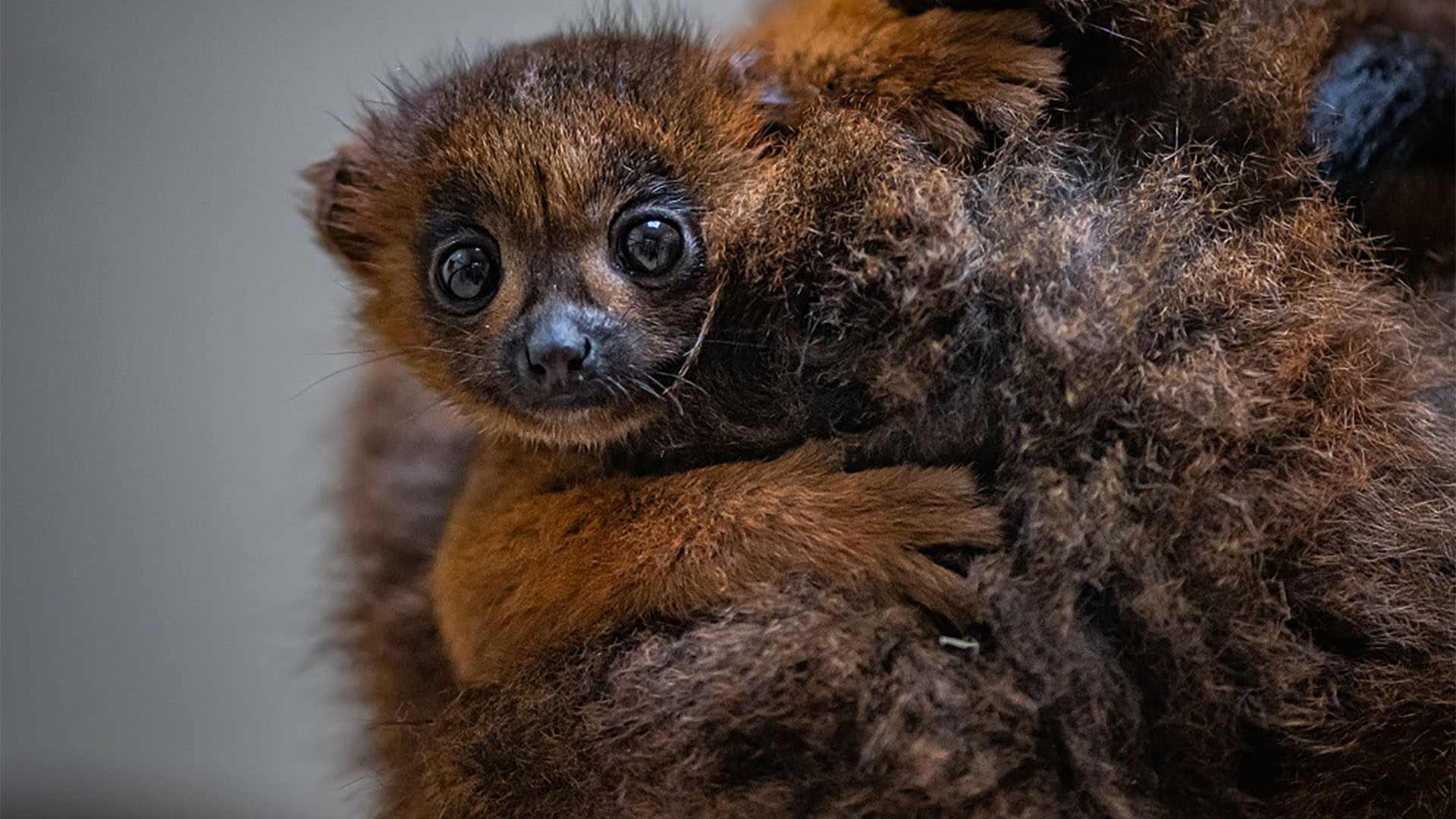Conservationists at Chester Zoo are celebrating the birth of a rare red-bellied lemur – the first of its kind ever to be born at the zoo.
The fluffy youngster, whose sex is currently unknown, arrived to parents Aina (4) and Frej (8) following a 127-day pregnancy.
The new baby was born around six weeks ago but keepers say the precious primate was so small and hidden in among mum’s thick fur that only now is it starting to become more visible. It was estimated to weigh just 70 grams at birth – around the same weight as a banana.
The birth is an important boost to the European breeding programme for the species with the red-bellied lemur listed as vulnerable to extinction in its native Madagascar – the only place where lemurs are found in the wild.
Experts say destruction of their forest homes, caused by people for agriculture and timber, as well as hunting for their meat has resulted in huge declines for all of the island’s 100 different species of lemur.
Claire Parry, Assistant Team Manager of Primates at Chester Zoo, said:
“The birth of any lemur is real cause for celebration as these primates are vulnerable to extinction in the wild and every new arrival is a vital addition to the endangered species breeding programme. This one, however, is extra special as it’s also the first baby red-bellied lemur ever to be born at Chester Zoo.
“Aina is a first-time mum who’s really taking motherhood in her stride – she’s very confident with her new addition. The baby is always seen clinging on tightly to her, which is exactly what we want to see, and this lovely little lemur looks incredibly content hidden in among mum’s warm fur.”
Mike Jordan, Director of Animal and Plants at the zoo, added:
“With lemurs considered as being the most endangered group of mammals in the world by the IUCN, every birth is significant. Lemurs are endemic to Madagascar where they are severely under threat with over 94% of all lemur populations at risk of disappearing forever. Sadly, we know that many larger lemur species have already become extinct.
“We need to ensure the species that do now remain on this diverse island are safe and protected. That’s why our conservationists have been engaged in protecting habitats and the unique species they are home to in Madagascar for over 10 years now. In 2015, the Malagasy government established The Mangabe New Protected Area, co-managed by our field partner Madagasikara Voakajy and the communities that live in Mangabe itself, providing a safe haven for nine species of lemur, as well as lots of other threatened species. We are fully involved in efforts to prevent their extinction.”
Red-bellied lemur facts
- The new red-bellied lemur baby at Chester Zoo was born on 31 March
- Mum Aina is four years old. Dad Frej is eight.
- Red-bellied lemurs are a sexually dimorphic species, which means males and females have differences in their appearance. Males have a red-brown fur colouring with white tear-drop shapes around their eyes, while females have red-brown fur with white fur on their underbellies, neck and chin, and little or no white around their eyes
- Babies are born the same colour as their mothers so that they can camouflage against their fur. Young males keep this colouration until they reach sexual maturity at around the age of two
- Lemurs are very unusual in the mammal world as they share a trait with only a handful of other species, female dominance. Red-bellied lemurs are one of the few lemurs species form a monogamous pairing and they live in a small family troop of mum, dad and off-spring.









